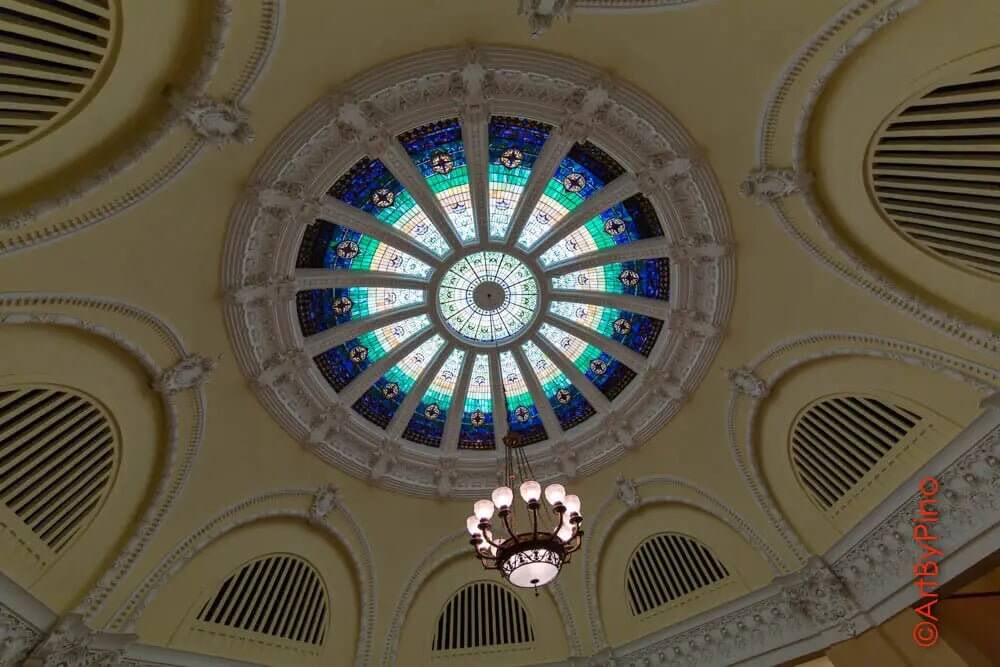
Dancy Building, Brownsville, Texas
Share
Full Disclosure: I am biased towards Brownsville, perhaps, in love with it. It is the architectural jewel of the Lower Rio Grande Valley. It has the most number of historic buildings that are well preserved. It has beautiful resacas and, of course, sits right on the border with my favorite country, Mejico or Mexico!
View fullsize


Front of Dancy Building photographed by McAllen Architecture & Portraits Photographer, Pino Shah.
This courthouse building is a must-see if you visit Brownsville along with the Southern Pacific Lines Passenger Station, The City Cemetery, The US Courthouse & Customs Building, Fort Brown, Stillman House Museum and many more! The art glass dome over the rotunda is a beauty.
View fullsize


Looking down from the upper floor in the rotunda of the Dancy Building.
View fullsize


Looking up at the glass art dome over the rotunda in the Dancy Building.
TEXAS HISTORICAL MARKER #13830 TEXT
This classically styled public building has been central for the Cameron County government for nearly a century. Texas and Mexico both claimed this area after 1836. The Texas Legislature created Cameron County in 1848, even before the land was officially made part of Texas and the U.S. by the Treaty of Guadalupe Hidalgo. Named for Scottish-born Ewen Cameron (c. 1811-1843), a soldier killed during the Mier Expedition, the county was one of the largest in the state until additional counties were later carved from its territory.
Santa Rita (5 mi. NW) was the first county seat before voters chose Brownsville in Dec. 1848. For a generation, there was no formal courthouse, as county officials conducted business in homes and rented commercial space. Cameron County built its first courthouse in 1882-83 at 1131 E. Jefferson, conducting business there for thirty years before the Rio Grande Masonic Lodge AF&AM No. 81 bought the building.
In October 1911, citizens of the growing county voted 1058-148 in favor of a new $200,000 courthouse. San Antonio architect Atlee B. Ayres (1873-1969) designed this building, as well as a new county jail at 1201 E. Van Buren, and both county buildings were completed in 1913. The Classical Revival style rectangular cross-axial plan courthouse is three stories with an elevated basement. The brick exterior features banded ground floor courses, Corinthian columns and pilasters, a dome and a classical parapet with terra cotta trim. The interior is notable for its octagonal rotunda and elaborate art-glass dome. When the county built a new courthouse in 1981, this site remained for county offices and was renamed the Dancy Building for Oscar C. Dancy (1879-1971), who served 48 years as county judge within these walls from 1921-33 and 1935-71.
View fullsize


MORE INFORMATION
http://www.co.cameron.tx.us/the_dancy_building.php

